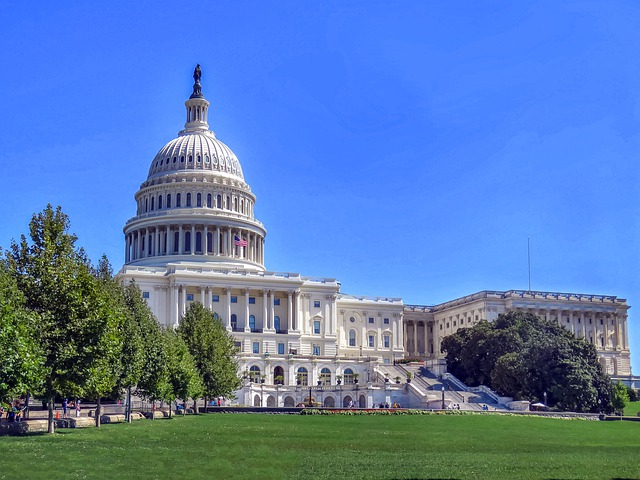ARRA vs. ARPA: What Can Education Leaders Learn About Funding?
By comparing ARRA and ARPA, district leaders can learn what works and what doesn’t for stimulus spending

The American Rescue Plan Act (ARPA) is not the first time K-12 education has seen an extraordinary amount of stimulus funding.
However, a fiscal cliff will be coming in September 2024, and the context of the economy and education are very different than almost 10 years ago when the American Reinvestment and Recovery Act (ARRA) was passed. Lessons can be learned by examining both, but there are also different challenges for district leaders.
ARRA vs. ARPA: If we know there’s a fiscal cliff, why do we keep using stimulus funds?
This is a question I’ve asked myself over and over again. Every time a new round of funding was announced, my first thought was, this is too much, too fast. What it forced me to do was look back to ARRA and try to understand what was successful about it, and why the federal government decided that this was the best strategy when the COVID-19 pandemic hit.
This also required me to understand stimulative policies and strategies. Stimulative fiscal policy consists of lowering taxes, increasing transfers to individuals, and increasing government purchases, or some combination of the three. The federal government pursued all three of these strategies as part of ARRA.
This round of stimulus funding was a bit different from 2009. When ARRA was enacted, the economy was already in a recession. State revenues were falling, and with the last recession, the housing market was a large part of the problem -- foreclosures impacted a great deal of revenue for school districts as many are funded by property taxes (82% in the 2016-17 SY). States using sales tax also fared poorly as those also decreased in the recession.
The funding rounds during the pandemic came at a different point in the cycle. The markets were a bit shaky and jumpy, but the recession had not started. In fact, ARPA funds came when spending was at an all-time high, causing supply shortages and shooting housing and car markets through the roof.
It is also important to look at when the funds were pumped into the economy, because it happened at two very different times. One was to boost the already recessionary economy, and the other was to prevent a recession from happening.
Tools and ideas to transform education. Sign up below.
The Great Recession (ARRA era) provided many lessons for economists and the Center on Budget Policy Priorities states that, “While the Great Recession measures were substantial and prevented an even more severe recession, they ended prematurely and were insufficient to promote a robust recovery. The protracted period of high unemployment and underemployment after the economy stopped contracting and began to grow again in June 2009 continued to generate human hardship and hurt long-term growth. Because lawmakers did not include provisions in the recently enacted coronavirus legislation to ‘trigger’ additional stimulus automatically, based on further deterioration in economic conditions, they must be prepared to enact additional measures as conditions require and to ensure they remain in place until the recovery is clearly underway.”
This time, the Federal government actually wants a controlled recession
With inflation reaching a 40-year high, the government is raising interest rates to slow down spending. The balancing act between recession and inflation is really hard, and tilting too far one way will have different negative effects. The Fed wants to get inflation back down, but wants to do it without a prolonged recession.
The economy is like a line of dominoes. The first domino to fall was inflation. Next, the Federal Reserve raised interest rates to create a “cooling off” period. Then, Russia invaded Ukraine. Then, the stock market started to tumble, economic anxiety led people to hold on to their money, and then we were back to Russia and increased oil prices.
According to The Washington Post, two scenarios might emerge. “It’s possible the Fed could play things perfectly and stop a recession before one begins. They could end up slowing the economy without causing it to contract altogether. In this case, companies don’t end up laying workers off, inflation comes down, and people feel more assured about the economy.
But there’s another scenario: The dominoes keep falling. Companies lay off workers, and those families stop spending as much money. If people stop spending money, more companies lay off workers and the cycle intensifies — and the dominoes appear unstoppable.”
What does this mean for education?
Comparing the ARRA era to the ARPA era really isn’t apples to apples, but there are lessons we can learn. For example, along with ARRA, Congress enacted the EduJobs Act, which included funds specifically for personnel. This is something ARPA funds did not include.
The U.S. Department of Education released a report on spending from 2009, and it is beneficial to look at some of those decisions as we move toward the end of ESSER dollars in September 2024.
The report states the following:
- Almost two-thirds of the 22 districts spent or planned to spend all of their ESF funds on personnel-related activities such as salaries and benefits for teachers and other staff. Overall, the 22 districts used or planned to use 84 percent of ESF funds for personnel expenditures. The remaining districts spent or planned to spend at least a portion of their ESF funds on nonpersonnel activities such as vocational courses, technology, and new construction. One district used all of its ESF funds for utilities. As mandated by the Ed Jobs statute, the 22 districts spent or planned to spend all of their Ed Jobs funds on personnel-related activities. District officials said they used or planned to use almost all of their ESF and Ed Jobs funds to maintain existing public education services and activities at prerecession levels and only a small percentage to expand existing or offer new services and activities. In contrast, the 22 districts used or planned to use about half of their Recovery Act Title I and IDEA funds for personnel costs and about half for nonpersonnel costs that were generally focused on student academic achievement, teacher performance, or parental support. District officials said they generally used or planned to use the majority of their Recovery Act Title I and IDEA funds to expand existing or offer new services and activities. Districts also used Recovery Act Title I or IDEA funds for regular grant expenditures so that they would spend Recovery Act funds within the grant period.
- In some cases, districts used stimulus funds for unsustainable activities because they wanted more students to benefit from the one-time infusion of supplemental funds. The presence of a funding cliff does not mean that a district’s use of stimulus funds was unsuccessful or did not achieve the intended result. District officials planned to continue essential services to the extent possible by prioritizing spending and reducing costs, but in some cases districts may have to lay off staff or reduce educational services.
- School districts that faced significant revenue shortfalls tended to spend their ESF and Ed Jobs funds more quickly than their Recovery Act Title I and IDEA funds. However, several districts delayed spending their ESF or Ed Jobs funds, which diminished immediate economic impacts. Districts more often used Recovery Act Title I and IDEA funds to support educational reforms than they did with ESF funds. As a result, educationally disadvantaged students and students with disabilities might have experienced more direct benefits related to educational reform from the Recovery Act than the student population as a whole.
- To avoid funding cliffs, many districts used stimulus funds for purchases that required one-time or short-term outlays. They often used the funds for professional development and technology.
- One district used stimulus funds for a major infrastructure project. These types of expenditures were intended to provide long-term benefits. Nine days before the grant period ended, the Department offered States a waiver to extend the grant period for Recovery Act Title I and other grants for an additional year so that districts could spend remaining funds.
- The Department intentionally offered the waiver late in the grant period because it had previously encouraged districts to carefully plan for the appropriate and timely use of the funds. However, if the waiver had been available earlier, districts might have had more time to implement their plans or develop new plans for using the remaining Recovery Act Title I funds and might have used the funds differently.
- Because the IDEA does not allow waivers to extend the grant period, the Department could not offer a similar waiver for Recovery Act IDEA funds, and districts forfeited those funds not spent by the end of the grant period.
Clear lessons are there to be learned from the ARRA era, but the variables for the economic and education climate are very different now under the ARPA era. It is my hope that district leaders look at how the funds were spent under ARRA and use lessons and strategies that worked, and avoid the ones that didn’t.
Susan comes from a strong policy background as a former staffer in the United States Senate and Legislative Aide in the Iowa House of Representatives.
Along with experience at both federal and state levels, she served as the Deputy Executive Director for the Center for Digital Education, worked for a government relations firm in Arlington, VA and heavily worked on federal and state education policy at iNACOL, where she wrote published reports to move the field forward with innovative learning models, best practices, and policy recommendations.

